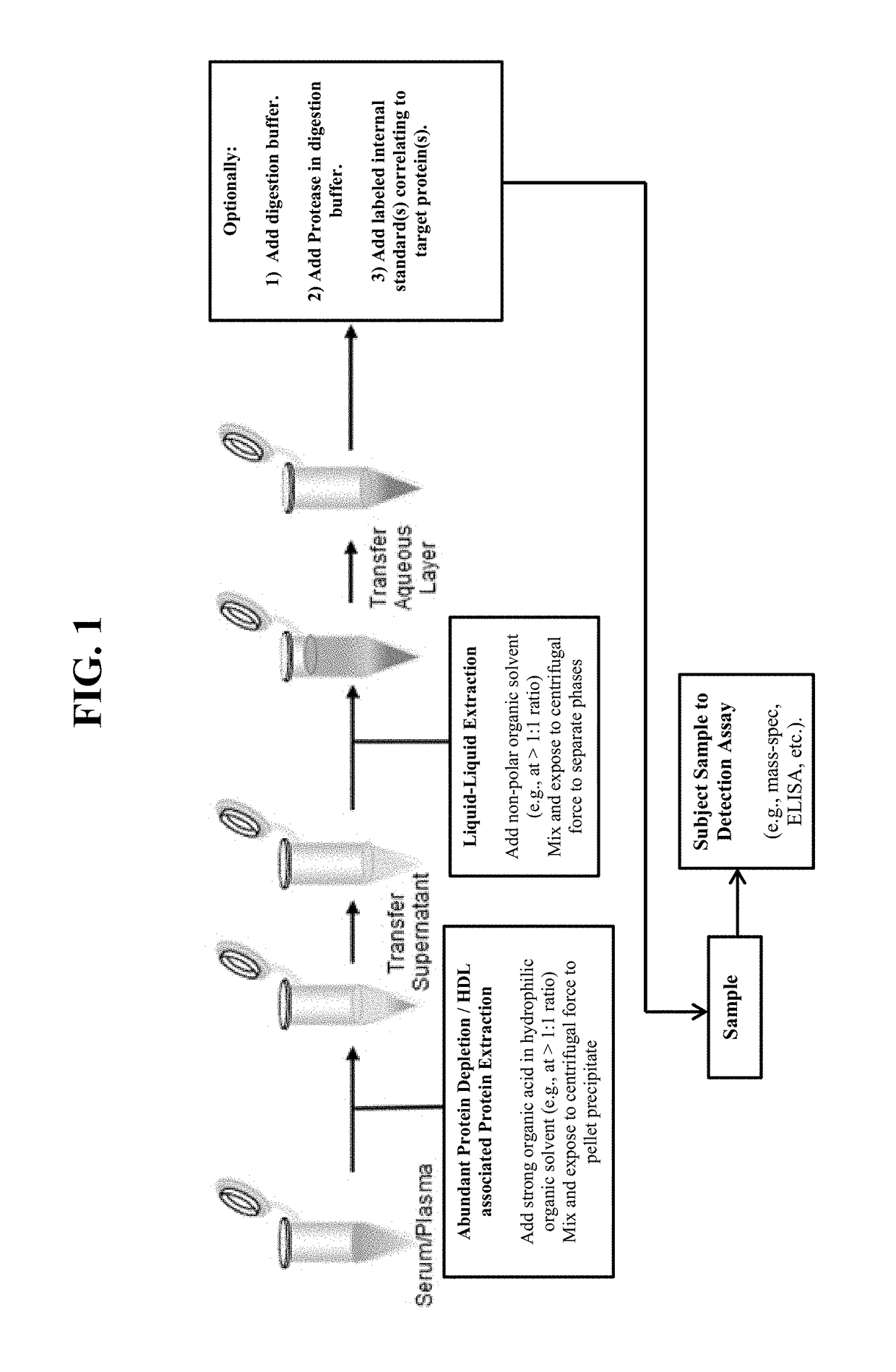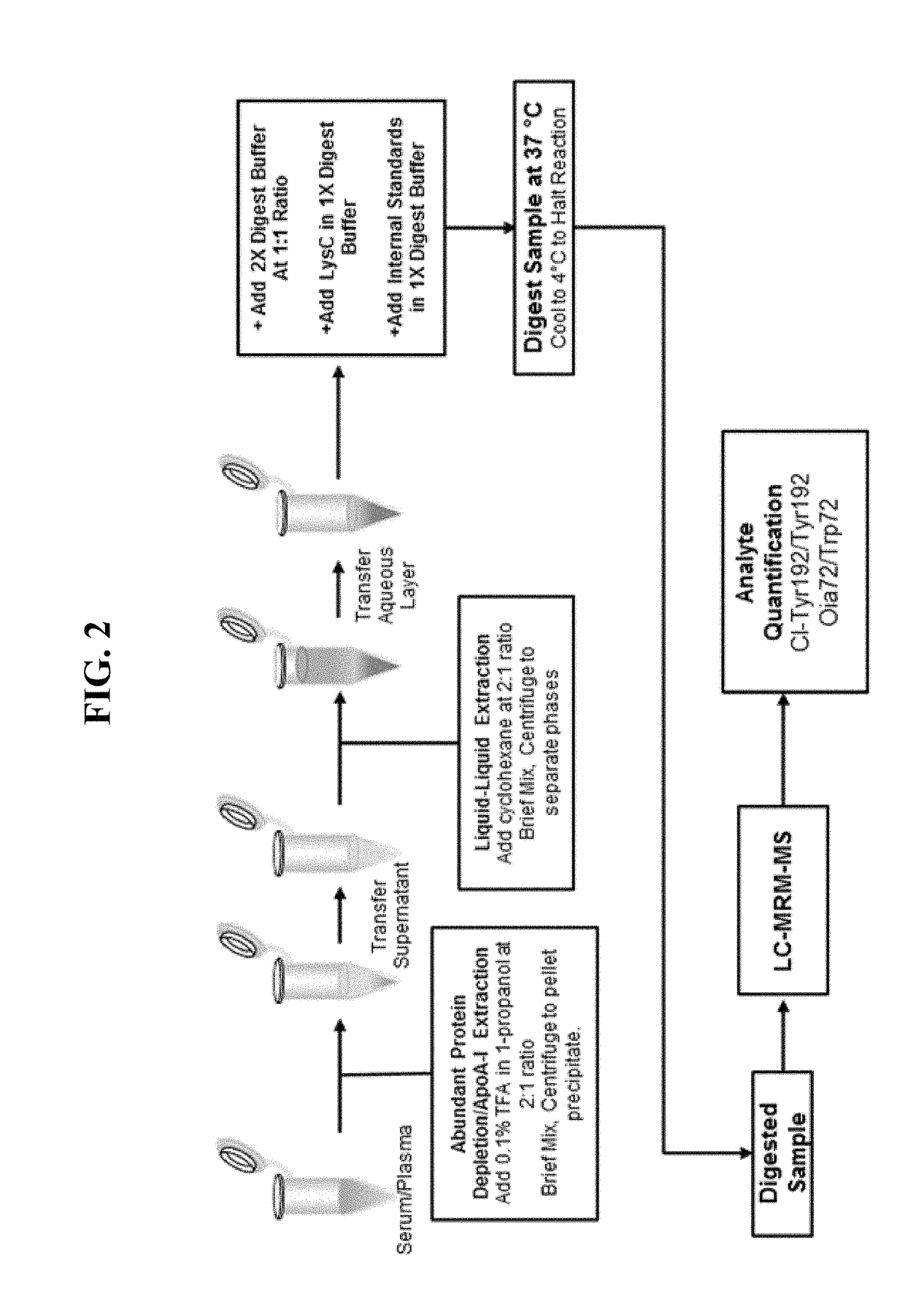Hdl-associated protein extraction and detection
a technology of hdl-associated protein and extraction method, which is applied in the field of hdl-associated protein extraction and detection, can solve the problems of limiting the throughput of the procedure, requiring a minimum of two prolonged ultracentrifugation steps, etc., and achieves the effect of reducing the activity of ph sensitive proteas
- Summary
- Abstract
- Description
- Claims
- Application Information
AI Technical Summary
Benefits of technology
Problems solved by technology
Method used
Image
Examples
Embodiment Construction
[0021]Provided herein are compositions, systems, and methods for extracting and detecting at least one HDL-associated protein from a sample (e.g., plasma or serum sample). In certain embodiments, a strong organic acid and hydrophilic organic solvent are mixed with the sample; after centrifugation, the supernatant is transferred to a second container where it is mixed with a non-polar organic solvent; after centrifugation, the lower aqueous layer is transferred to a third container; and then at least a portion of the transferred aqueous layer is subjected to a detection assay such that at least one HDL-associated protein is detected.
[0022]In certain embodiments, the purification methods described herein are employed to purify human ApoA1, and particular modified amino acids in ApoA1 (Tyr192 or Trp72) are detected. The myeloperoxidase (MPO)-driven chlorination of apolipoprotein A-I tyrosine 192 (Tyr192) has been shown to be elevated in the presence of vessel wall inflammation, and may...
PUM
 Login to View More
Login to View More Abstract
Description
Claims
Application Information
 Login to View More
Login to View More - R&D
- Intellectual Property
- Life Sciences
- Materials
- Tech Scout
- Unparalleled Data Quality
- Higher Quality Content
- 60% Fewer Hallucinations
Browse by: Latest US Patents, China's latest patents, Technical Efficacy Thesaurus, Application Domain, Technology Topic, Popular Technical Reports.
© 2025 PatSnap. All rights reserved.Legal|Privacy policy|Modern Slavery Act Transparency Statement|Sitemap|About US| Contact US: help@patsnap.com



